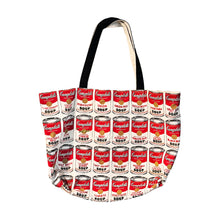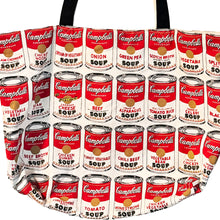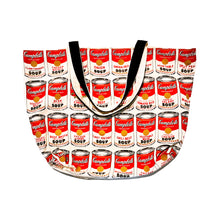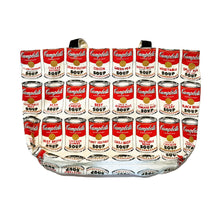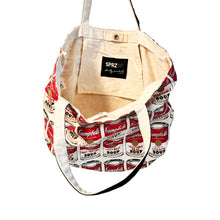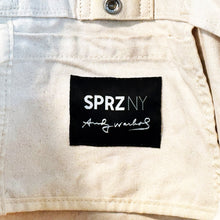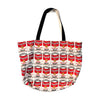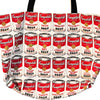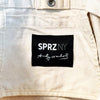'Campbell's Soup' by Uniqlo, 2019
Collectible canvas Tote Bag from the SPRZ-NY collection.
Officially licensed by the Andy Warhol Foundation.
18 x 12 x 6 Inches
45.7 x 30.5 x 15.2 Centimeters
Original 100% cotton canvas tote bag with Warhol's iconic Campbell's Soup cans.
All-over design with multiple soup variations and snap-button closure.
Heavy-duty 2-tone canvas handles.
Andy Warhol's printed signature label on inner slip pocket.
Unknown edition (sold out).
*Note: Very good original, pre-owned condition.
ABOUT THE ART
Andy Warhol famously appropriated familiar images from consumer culture and mass media, among them celebrity and tabloid news photographs, comic strips, and, in this work, the widely consumed canned soup made by the Campbell’s Soup Company. When he first exhibited 'Campbell’s Soup Cans' in 1962, the canvases were displayed together on shelves, like products in a grocery aisle. At the time, Campbell’s sold 32 soup varieties; each one of Warhol’s 32 canvases corresponds to a different flavor. (The first flavor the company introduced, in 1897, was tomato).
Though 'Campbell’s Soup Cans' resembles the mass-produced, printed advertisements by which Warhol was inspired, its canvases are hand-painted, and the fleur de lys pattern ringing each can’s bottom edge is hand-stamped. Warhol mimicked the repetition and uniformity of advertising by carefully reproducing the same image across each individual canvas. He varied only the label on the front of each can, distinguishing them by their variety. Warhol said of Campbell’s soup, “I used to drink it. I used to have the same lunch every day, for 20 years, I guess, the same thing over and over again.”
Towards the end of 1962, shortly after he completed 'Campbell’s Soup Cans', Andy Warhol turned to the photo-silkscreen process. A printmaking technique originally invented for commercial use, it would become his signature medium and link his art making methods more closely to those of advertisements. “I don’t think art should be only for the select few,” he claimed, “I think it should be for the mass of the American people.”









